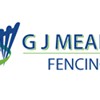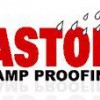
Yes, we're a bit eccentric. We took Dry Rot infected timbers from one property, put them all in a box and experimented with them until they became a tamed beast! This video is a little bit of fun and a example that the science element of our work is fascinating!
We can all safely say that the world of damp and decay is not a glamorous one. When we learn of its presence or are told by another that we have a "Rising Damp" problem, the shoulders sag, the head tilts forward, we pick up the phone, and the long, tedious process to its elimination starts. Thankfully, the beginning of that journey has brought you to us, and I want to implore you to stick around a little longer and don't go anywhere else, as you really don't need to. Defining damp and its possible myriad of originating sources can be a head scratcher for many and take longer to solve than just a quick fifteen-minute inspection from one of the hundreds of 'Specialists' out there.
Woodworm is the term most used when describing wood boring insect activity within the timbers of buildings. There are several insects that may attack the timbers within your property - some require treatment - some don't! The most common wood destroying beetle found in British buildings today is the Common Furniture Beetle (Anobium punctatum). This insect commonly occurs outdoors infesting dead tree trunks, branches and other forms of exposed timber but, the main cause for concern is its ability to infest indoor timbers in a variety of situations.
We have a small, qualified (RSPH level 2) and experienced pest control team who are able to advise on and carry out remedial treatments on most kinds of pest species. So whether you have a pest problem in your home or even within your business we can offer you solutions. Common kinds of pests encountered and dealt with on a regular basis include rats, mice, grey squirrels, ants, wasps and various kinds of insects and beetles. We always strive to use an integrated pest management approach when dealing with any pest problem.
Penetrating damp is exactly what is says on the tin. Water, from an external source, making its way through the buildings defences, normally due to a defect surrounding the property, then entering your property. When this invading water source breaks through to the inner faade, there will be no doubting its presence. Uncharacteristic staining's to the internal face positioned on an external wall. Surface disruption to the paint and plaster will be evident. There may also be hygroscopic salts present on the surfaces, these salts attract atmospheric moisture and can make an issue look worse than it is.
Wet rot is caused principally by Coniophora puteana. Poria vaillantii is another important wet rot fungus and a number of less common fungi also occur.
Good to see local organisations coming up with new ideas to continue despite the coronavirus situation.
Think your house might be suffering from condensation
Similar Businesses







